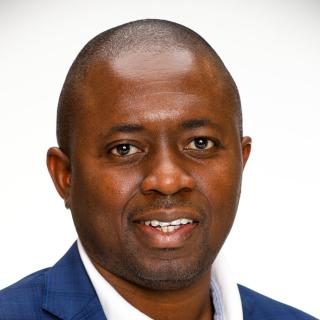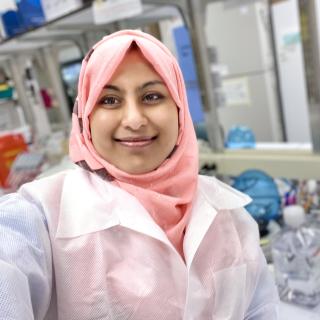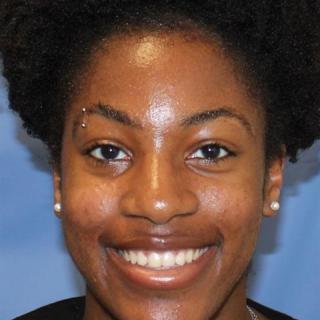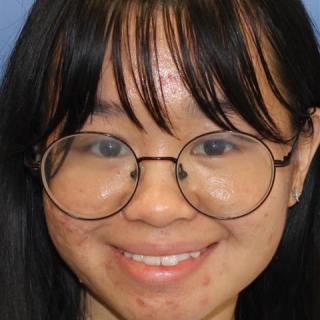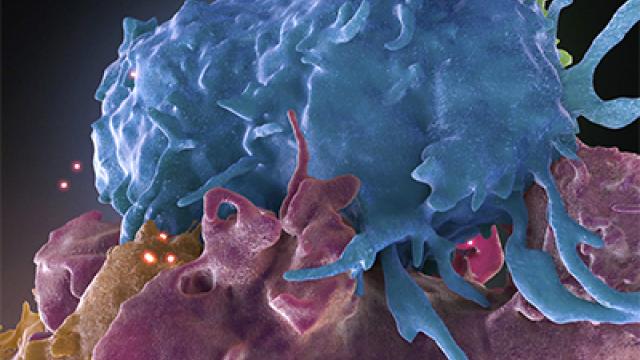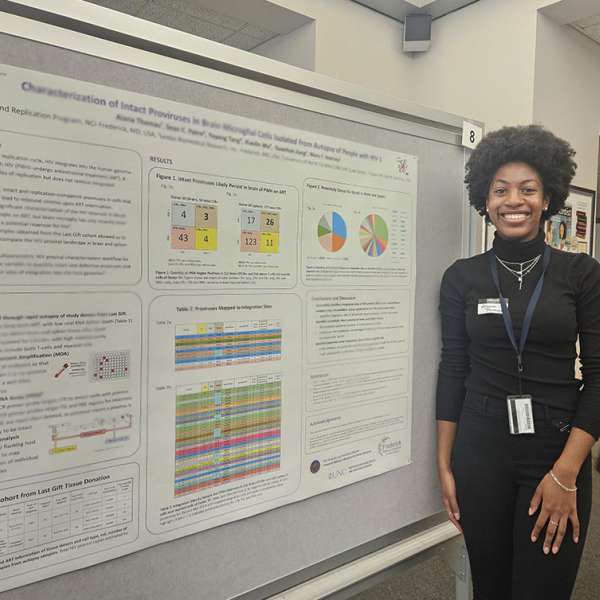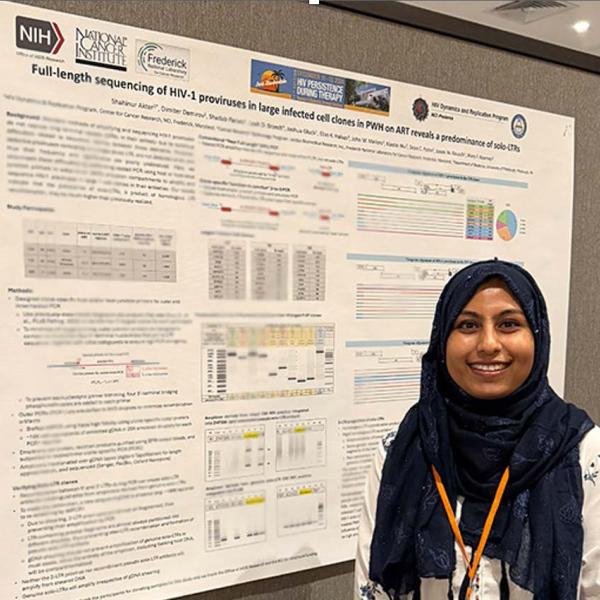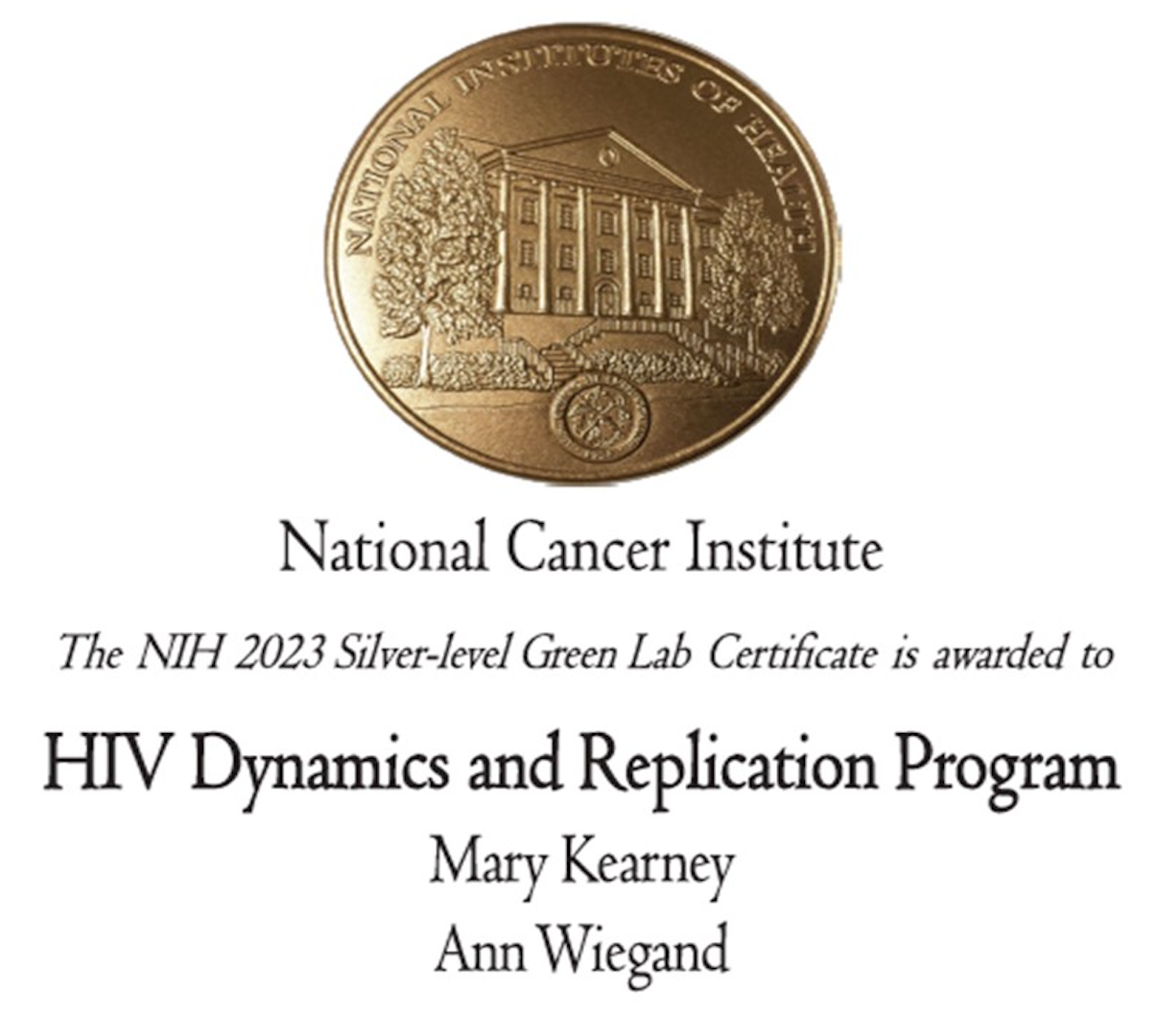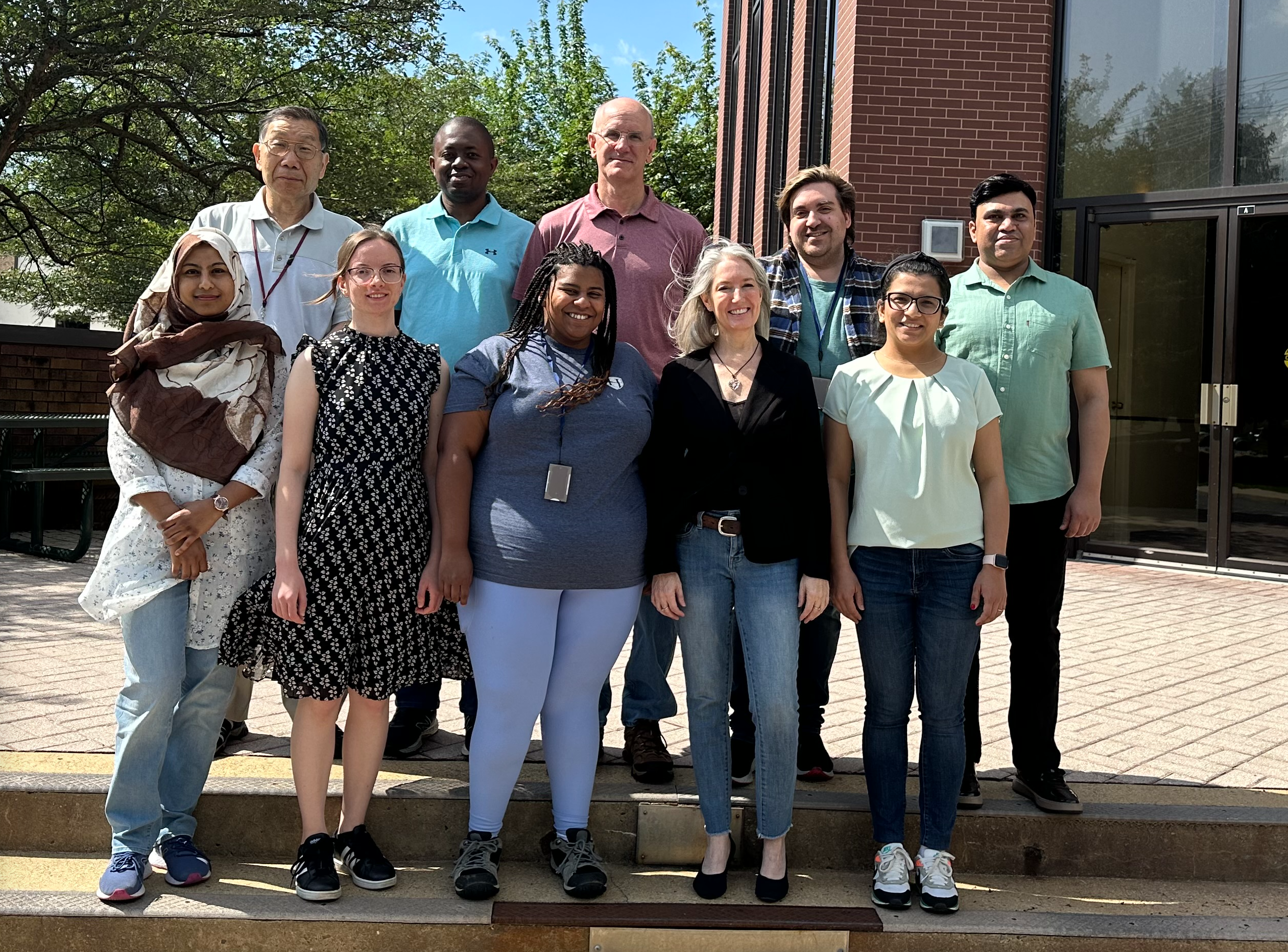
Mary F. Kearney, Ph.D.
- Center for Cancer Research
- National Cancer Institute
- Building 535, Room 310
- Frederick, MD 21702-1201
- 301-846-6796
- kearneym@mail.nih.gov
RESEARCH SUMMARY
Dr. Kearney conducts research on the emergence of HIV drug resistance, the persistence of HIV during antiretroviral treatment (ART), and the sources of rebound viremia after stopping ART. Her studies have demonstrated that a diverse population of HIV-infected cells persist during ART, that some infected cells proliferate despite ART, and that residual viremia results from viral expression of cells infected prior to ART. Dr. Kearney heads the Translational Research Section, which aims to understand the genetics, evolution, and persistence of HIV and other RNA viruses and to design new approaches toward targeting and killing infected cells. Currently, she also serves as Chair of the NIH Women Scientists Advisors (WSA). The WSA identify issues affecting women scientists and design and implement strategies to address them. Dr. Kearney was appointed as HIV DRP Deputy Director of Translational/Clinical Research in 2021 and as CCR Deputy Director of Basic Research in 2023.
Areas of Expertise

Mary F. Kearney, Ph.D.
Research
Studies of Clinical Resistance
The Translational Research Section (TRS) is primarily responsible for advancing the clinical and translational research efforts of the HIV DRP by developing and applying new technologies to characterize and identify the sources of persistent HIV-1 despite antiretroviral therapy (ART) and to evaluate the effect of HIV-1 genetic diversity, expression, and low-frequency drug-resistance mutations on the response to ART. Working closely with Frank Maldarelli in the Clinical Retrovirology Section, in consultation with John Coffin of Tufts University and John Mellors of the University of Pittsburgh, the TRS collaborates with research groups worldwide to perform studies of HIV-host interactions, viral persistence during therapy, sources of rebound viremia, and the evolution of resistance.
HIV-1 persists in individuals on ART despite suppression to very low levels and usually rebounds to pretherapy levels if ART is stopped. The mechanisms that allow viremia to persist during therapy are not well understood. Their elucidation is imperative if HIV-1 infection is ever to be cured. Cellular reservoirs that harbor HIV-1 genomes and express viral RNA during ART are long-lived, proliferating cells that were infected prior to initiating therapy. By investigating the genetics of HIV-1 plasma RNA and cellular HIV-1 DNA and RNA, the TRS aims to reveal sources of persistent virus production on ART and the sources of rebound viremia after stopping ART. The TRS developed the gold-standard assays that allow for sequencing of HIV RNA and DNA in single virions and in single infected cells. These assays are applied to blood and tissues from donors to characterize the genetics of viremia in individuals on and off ART.
Determining the frequency of rare, drug-resistant variants in untreated and treated individuals can provide important insights into the emergence of drug resistance and into the effective population size of HIV-1. The TRS developed an ultrasensitive single-genome sequencing (uSGS) assay that provides sequence information from thousands of HIV variants present in donors’ plasma, providing templates to investigate the linkage of drug-resistance mutations and to perform studies on HIV-1 transmission and evolution. Ongoing studies include applying these and other ultrasensitive methods under development to samples collected before and after exposure to ART to investigate the impacts of HIV-1 diversity, low-frequency drug-resistant variants, and effective population size on transmission and on the response to treatment.
Kearney Lab, February 2023
Top row (left to right): Jason Rausch, Jon Spindler, Wei Shao, Tolu Shahinur, Adam Capoferri, Victoria Neer, John Coffin, Mary Kearney
Publications
- Bibliography Link
- View Dr. Kearney's PubMed Summary
- View Dr. Kearney's ORCID Bibliography
Early emergence and long-term persistence of HIV-infected T-cell clones in children
Combined HIV-1 sequence and integration site analysis informs viral dynamics and allows reconstruction of replicating viral ancestors
HIV infected T cells can proliferate in vivo without inducing expression of the integrated provirus
HIV-1 in lymph nodes is maintained by cellular proliferation during antiretroviral therapy
Single-cell analysis of HIV-1 transcriptional activity reveals expression of proviruses in expanded clones during ART
Biography

Mary F. Kearney, Ph.D.
Dr. Kearney received her Ph.D. in Biology at Catholic University in 2007 under the direction of John Coffin, Sarah Palmer, and Venigalla Rao. She received The Benedict T. DeCicco Award for Excellence in Graduate Research in 2008. In 2001 she joined the HIV Drug Resistance Program (HIV DRP, renamed the HIV Dynamics and Replication Program in 2015) as a Biologist in the Virology Core. In 2008 she was promoted to Head of the Translational Research Unit (renamed the Translational Research Section in 2020), where she oversees a team that investigates viral genetics and expression in vivo, the sources of persistent HIV during antiretroviral therapy (ART), the sources of rebound viremia after stopping ART, the mechanisms for maintaining the HIV reservoir, and the mechanisms for the emergence of drug-resistance mutations in HIV and other RNA viruses. Dr. Kearney was a consultant to the World Health Organization from 2010 to 2016. In 2019 she was promoted to Senior Scientist. Dr. Kearney was awarded the NIH Director’s Award and NCI Group Award in 2012, the NCI Director's Award in 2015, the CCR Group Award in 2016, and the NIH Director’s Award in 2019 and 2021. She was nominated by CCR Director, Tom Misteli, and selected to receive an individual 2021 NCI Director's Award in recognition of her initiative and accomplishments to improve workplace wellness through exemplary leadership and mentoring. Dr. Kearney was appointed as HIV DRP Deputy Director of Translational/Clinical Research in 2021, was elected Chair of the NIH Women Scientists Advisors (WSA) in 2022, and was appointed CCR Deputy Director of Basic Research in 2023.
Job Vacancies
We have no open positions in our group at this time, please check back later.
To see all available positions at CCR, take a look at our Careers page. You can also subscribe to receive CCR's latest job and training opportunities in your inbox.
Team
News
Adam Capoferri publishes in Life Sci Alliance
Adam Capoferri, and Toluleke O. Famuyiwa publish in the journal Life Sci Alliance showing in vivo detection of antisense HIV-1 transcripts in untreated and ART-treated individuals (2025). This paper was also published with several former lab members including Rachel Sklutuis, Sachi Pathak, and Jennifer Groebner, along with collaborators John M. Coffin (Tufts) and John W. Mellors (U.Pitt).
- In vivo detection of antisense HIV-1 transcripts in untreated and ART-treated individuals. Life Sci Alliance. 2025 July 14;8(9):e202503204.
Poster Presentations at NCI Spring Poster Day 2025
Alana Thomas (postbac) showcased her research to the NCI community at the spring poster day in Frederick (2025).
Poster Presentation at the HIV Persistence Meeting
Shahinur Akter and Adam Capoferri presented posters at the 2024 HIV Persistence Meeting, Fort Lauderdale, Florida.
Photo: Shahinur Akter presenting her poster on Solo-LTR.
Kearney lab are Green!
Members of the Kearney lab won The NIH 2023 Silver-level Green Lab Certificate, which is considered the gold standard for laboratory sustainability best practices around the world.
Adam Capoferri publishes in PNAS
Adam Capoferri, Ann Weigand, Jonathan Spindler, Andrew Musick, and Wei Shao publish in the journal PNAS showing that HIV-1 control in vivo is related to the number but not the fraction of infected cells with viral unspliced RNA (2024).
- HIV-1 control in vivo is related to the number but not the fraction of infected cells with viral unspliced RNA. Proc Natl Acad Sci U S A. 2024 Sep 3;121(36):e2405210121
Poster Presentation at the International AIDS Conference
Adam Capoferri presented a poster at the 2024 International AIDS Conference, Munich, Germany.
NIH Fellows Awards for Research Excellence
Shadab Parvez won a 2025 NIH Fellows Award for Research Excellence (FARE) for to support his work. This award is used to attend and present his work at a scientific meeting in the U.S. This award, which acknowledges outstanding scientific research performed by intramural postdoctoral fellows, is sponsored by the NIH Fellows Committee, Scientific Directors, and Office of Intramural Training and Education and is funded by the Scientific Directors. FARE awards are based on scientific merit, originality, experimental design, and overall quality/presentation of the abstracts. Previous winner, Adam Capoferri (2023) and Jennifer Groebner (2022).
Congratulations Wei Shao!
After 18 years as a bioinformatician at NCI, Wei Shao retired! We wish you all the best.
Photo of Kearney lab
Federal Technology Transfer Award 2024
Wei Shao receives a 2024 Federal Technology Transfer Award (FTTA).
The awards are for those employees who contribute their skills, energy, and expertise to the advancement of the public health and science through technology transfer.
Members of the Kearney Lab 2024
Photo of Kearney Lab Summer 2024. Top row, left to right: Wei Shao, Tolueke Famuyiwa, Jason Rausch, Adam Capoferri, Shadab Parvez. Bottom row, left to right: Shaniur Akter, Victoria Neer, Angel Boardley, Mary Kearney, Shivalee Duduskar. Missing: Ann Weigand, Jon Spindler, and Alana Thomas.
Mary Kearney receives NCI Director's Award For Emerging Leader (2024)
New Investigator Scholarships, Conference on Retroviruses and Opportunistic Infections
Adam Capoferri presented his poster at the 2024 Conference on Retroviruses and Opportunistic Infections (CROI). Joshua Gluck and Victoria Neer were awarded a New Investigator Scholarships to attend CROI and present posters.
Previous CROI scholarship awardees include Jennifer Groebner in 2021, Adam Capoferri in 2021, Sean Patro and Jenna Hasson in 2020, Mary Grace Katusiime in 2019, Andrew Musick in 2017 and 2018, and Chad Coomer in 2014.
Jason Rausch publishes in Viruses
Jason Rausch, Shadab Parvez, Sachi Pathak, and Adam Capoferri publish in the journal Viruses showing HIV expression in infected T cell clones (2024).
- HIV expression in infected T cell clones. Jan 11;16(1):108. PMID: 38257808
Mary Kearney appointed CCR Deputy Director of Basic Research in 2023
Jason W. Rausch received 2023 Federal Technology Transfer Award
Jason W. Rausch received a 2023 Federal Technology Transfer Award for developing an Oxford Nanopore library prep protocol and companion Python demultiplexing script to sequence PCR amplicons derived from HIV-1 proviruses in high throughput.
Intramural AIDS Research Fellowships
Intramural AIDS Research Fellowship (IARF) awards from the Office of AIDS Research, Office of Intramural Research, and Office of Intramural Research & Training in the National Institutes of Health include full stipend support to successful candidates who demonstrate outstanding scientific potential through both an imaginative and thoughtful research plan and a well thought out career development plan.
Adam Capoferri received an IARF award in 2023 to support his research. Adam Capoferri also received this award in 2022.
Mary Kearney Received 2021 NIH Director's Award
Mary Kearney received a 2021 NIH Director's Award with other members of the CCR Women Scientists Advisors (WSAs) for "demonstrating extraordinary initiative, leadership, and creativity to assess and respond to career development and workplace issues in the wake of the pandemic."
Mary Kearney Appointed as a Deputy Director in HIV Dynamics and Replication Program
In October 2021, Mary Kearney was appointed as HIV DRP Deputy Director of Translational/Clinical Research.
Mary Kearney Selected to Receive NCI Director's Award
Mary Kearney was been nominated by CCR Director, Tom Misteli, and selected to receive an individual 2021 NCI Director's Award for Workplace Wellness in recognition of her initiative and accomplishments to improve workplace wellness through exemplary leadership and mentoring.
Alumni
Resources
Proviral Sequence Database (PSD)
Despite the success of antiretroviral therapy (ART), HIV-1 persists in reservoirs and viremia rebounds if treatment is interrupted. To facilitate understanding of the genetic structure and dynamics of the HIV-1 reservoir, we developed a public database, Proviral Sequence Database (PSD), for the storage and meta-analyses of near full-length (NFL) HIV-1 genomic RNA and proviral sequences that persist in donors on ART or that rebound after ART is interrupted (described in Retrovirology 13: 47, 2016). This relational database contains information about host characteristics, treatment, HIV-1 sequences, and tools for sequence annotation/features. PSD was developed by bioinformatics analysts Wei Shao and Jigui Shan (Advanced Biomedical Computing Center, Leidos Biomedical Research, Inc.) in consultation with investigators John M. Coffin (Tufts University); Mary F. Kearney and Wei-Shau Hu (HIV DRP); and John W. Mellors (University of Pittsburgh). PSD can be accessed at the website https://psd.cancer.gov.
Retrovirus Integration Database (RID)
A database on retrovirus integration sites is now available for use by intramural and extramural investigators. The Retrovirus Integration Database (RID) was developed by bioinformatics analysts Wei Shao and Jigui Shan (Advanced Biomedical Computing Center, Leidos Biomedical Research, Inc.) in consultation with John M. Coffin (Tufts University) and HIV DRP investigators Stephen H. Hughes, Frank Maldarelli, and Mary F. Kearney (described in AIDS Res. Hum. Retroviruses 36: 1, 2020). RID can be accessed at the website https://rid.ncifcrf.gov.
HIV-DRLink
We developed a program, HIV-DRLink, that works in conjunction with the Stanford HIV Drug Resistance Database to rapidly report linked and unlinked HIV-1 drug-resistance mutations in large data sets generated by single-genome sequencing methods that eliminate PCR-based recombination and nucleotide mixtures (described in in AIDS Res. Hum. Retroviruses 36: 942, 2020). HIV-DRLink is a necessary tool to further investigate the effect of single versus linked preexisting drug-resistance mutations on the outcome of antiretroviral therapy. HIV-DRLink was developed by bioinformatics analyst Wei Shao (Advanced Biomedical Computing Center, Leidos Biomedical Research, Inc.) in consultation with John M. Coffin (Tufts University) and HIV DRP investigators Mary F. Kearney and Frank Maldarelli.
Sequence Overrepresentation (SOR) Index
The Sequence Overrepresentation (SOR) index measures whether or not a cluster of identical sequences within a population is larger than expected by chance given the overall diversity of the population. Briefly, the SOR index (described in Proc. Natl. Acad. Sci. USA 116: 25891, 2019) compares the probability of finding N identical sequence pairs in a set of sequence pairs that have a Poisson distribution with average given by the average p-distance of the supplied sequence set. The sequence set supplied to the SOR webpage should be prealigned and devoid of any sequences that would produce artificially high genetic distances — e.g., hypermutants and outgroup consensus sequences. Output of the SOR webpage is a bar graph showing the distribution of pairwise distances within the supplied dataset (if requested) and a table of p-values with their associated rake sizes and IDs. The SOR index and webpage were developed by postbaccalaureate fellow Michael Bale (HIV DRP) and investigator Brian Luke (Advanced Biomedical Computing Center, Leidos Biomedical Research, Inc.) in consultation with investigators John M. Coffin (Tufts University) and Mary F. Kearney (HIV DRP). An R script version of the web app and the supporting web app code are available at https://github.com/michaelbale.
HIVIntact
The characterization of the HIV-1 reservoir, which consists of replication-competent integrated proviruses that persist on antiretroviral therapy (ART), is made difficult by the rarity of intact proviruses relative to those that are defective. While the only conclusive test for the replication competence of HIV-1 proviruses is carried out in cell culture, genetic characterization of genomes by near full-length PCR and sequencing can be used to determine whether particular proviruses have insertions, deletions, or substitutions that render them defective. Proviruses that are not excluded by having such defects can be classified as genetically intact and, possibly, replication competent. Identifying and quantifying proviruses that are potentially replication competent is important for the development of strategies toward a functional cure. However, to date, there are no programs that can be incorporated into deep-sequencing pipelines for the automated characterization and annotation of HIV genomes. Existing programs that perform this work require manual intervention, cannot be widely installed, and do not have easily adjustable settings. In collaboration with Gert van Zyl and Imogen Wright (University of Stellenbosch) and John M. Coffin (Tufts University), HIV DRP investigators Mary F. Kearney, Wei-Shau Hu, and Michael Bale and bioinformatics analyst Wei Shao (Advanced Biomedical Computing Center, Leidos Biomedical Research, Inc.) developed HIVIntact as a python-based software tool that characterizes genomic defects in near full-length HIV-1 sequences, allowing putative intact genomes to be identified in silico (described in Retrovirology 18: 16, 2021). Unlike other applications that assess the genetic intactness of HIV genomes, this tool can be incorporated into existing sequence-analysis pipelines and applied to large next-generation sequencing datasets. The HIVIntact pipeline and test data may be downloaded from a public GitHub repository (https://github.com/ramics/HIVIntact under an open-source MIT license.
NanoHIV
HIV-1 proviral single-genome sequencing by limiting-dilution PCR amplification is important for differentiating the sequence-intact from defective proviruses that persist during antiretroviral therapy (ART). Intact proviruses may rebound if ART is interrupted and are the barrier to an HIV cure. Oxford Nanopore Technologies (ONT) sequencing offers a promising, cost-effective approach to the sequencing of long amplicons such as near full-length HIV-1 proviruses, but the high diversity of HIV-1 and the ONT sequencing error render analysis of the generated data difficult. Mary F. Kearney (HIV DRP) collaborated with Imogen Wright and Gert van Zyl (University of Stellenbosch) to develop NanoHIV as a new tool that uses an iterative consensus generation approach to construct accurate, near full-length HIV-1 proviral single-genome sequences from ONT data (described in Cells 10: 2577, 2021. The NanoHIV pipeline and scripts may be downloaded from a public GitHub repository at https://github.com/ramics/NanoHIV



